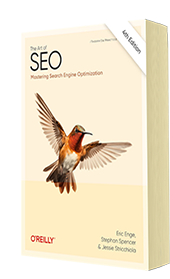Optimizing Your Content For Search Engines
Step 1: Draw up a Content Plan
Armed with keyword research, come up with a content plan that incorporates your existing content pages plus any new ones you plan to create. Every page of your site has its own unique “song” so the goal is to make each page “sing” for its own unique keyword focus. Each page should have one, maybe two, but certainly no more than three keyword foci. If, for example, you are targeting 100 different keywords, the number of pages in your content plan should number in the dozens. Pick your very best keyword opportunity for your home page, because your home page is the page that gets the most weight from the search engines.
Step 2: Assemble planned content pages into a search-optimal Site Map
Certain pages of content you are going to want to have ranking higher, or given the most opportunity to rank high over others. The way that you favor some content over other content as far as search visibility is concerned is by placing it higher up in the tree structure of your site hierarchy. The less popular content targeting the more esoteric keywords should go lower down the tree.
Step 3: Sit down and start writing (and editing)!
Now that you have your Content Plan and Site Map, it is time to start writing, or at least resourcing your content from other sources if you don’t have time to write content from scratch. Remember you are writing for humans and search engines equally. So you still have to be compelling, interesting, succinct, relevant and reader-focused. Placement of keywords on the web page is key to your search engine rankings. The higher up on the page the more weight the keyword receives. Have at least 200-250 words per page and pay special attention to the page title as that is the most important element on the page as far as the search engines are concerned.
Step 4: Test and revise
Now that hopefully you have a good base of content to work with it, doesn’t end here. A website is never finished. There are always things you can do to improve your site’s visibility, readability and conversion rate. Treat your web marketing as a series of experiments. Make a hypothesis and test the hypothesis. For example, you might have an idea how to shuffle words around in the page title to improve your ranking for a particular keyword. Go ahead and give it a try and see if it works but don’t try to change too many variables at once because you won’t be able to identify the thing that actually worked.

Chapter 6:
Keyword Research
From the fundamentals of link building to the nuances of natural linking patterns, virality, and authority.
Related Posts

Embrace Journaling, Tackle Tardiness, and Explore Our Energetic Echo
Here’s what I found inspirational, challenging, or just downright hilarious this week. What caught your eye? And, remember to check out this week’s great podcast episodes: Scaling a SaaS Company with Jason Morehouse “A crucial factor to business success is to find and take the personal path that works best for you.” — Jason Morehouse […]
Read More
Harrison’s harmony, conquering a blank canvas, & gut health hacks
Here’s what I found inspirational, challenging, or just downright hilarious this week. What caught your eye? And, remember to check out this week’s great podcast episodes: Be a Sales Game Changer with Fred Diamond “True elite sales professionals develop a dedicated mindset, proactive client interaction, and continuous self-preparation. They understand their client’s needs and enable […]
Read More
Rebirth of sleeper trains, 4,000 weeks is a long/short time, and golden age for medicine
Here’s what I found inspirational, challenging, or just downright hilarious this week. What caught your eye? And, remember to check out this week’s great podcast episodes: A Story Worth Retelling with Luke Storey “Aligned values are the cornerstone of successful partnerships, whether in business or life, as they shape our moral code, define our priorities, […]
Read More
